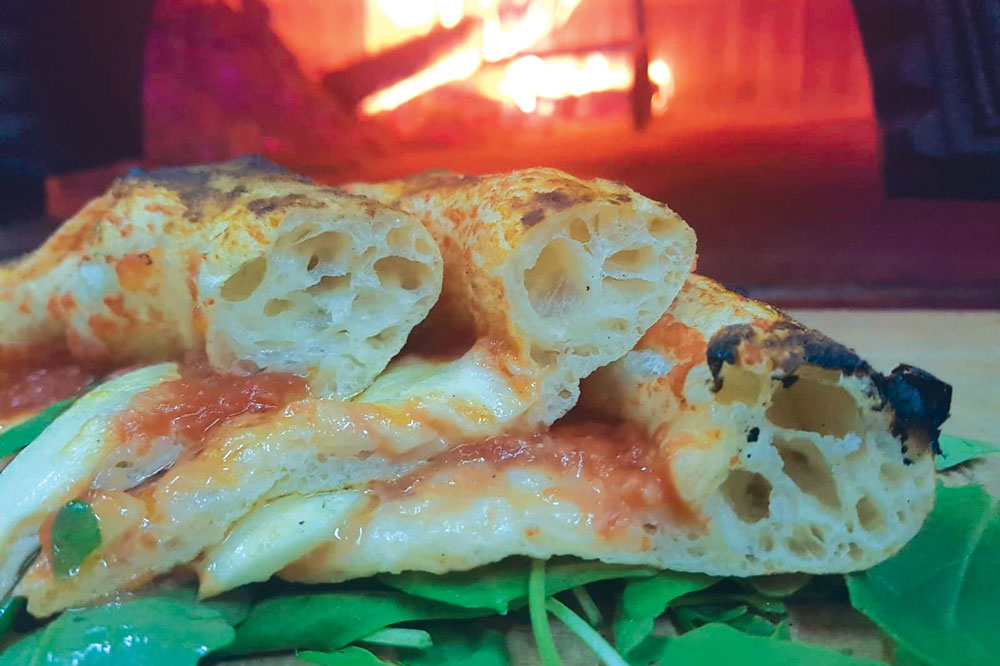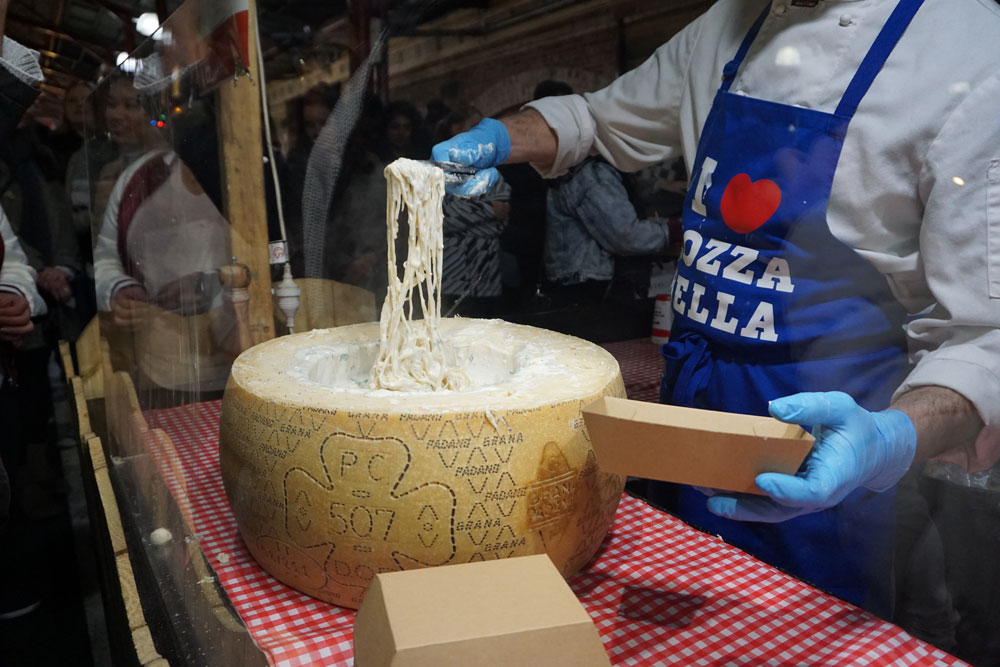Creating a true Neapolitan pizza is no easy task. The list of approved ingredients is short, and the procedures involved in mixing, proofing and baking the pizza are stringent and exact. But as technology, education and focus on health advance, some Italian pizza chefs are finding the required protocols for vera pizza Napoletana too limiting. Restrictions to a single type of highly refined white flour, a short maturation time and a bake in a wood-burning oven are some of the characteristics pizzaioli today find outdated. Their deviations are heralding in a new movement in pizza, inspired by the tradition of Naples with a twist, which they call Contemporary Neapolitan pizza.
Seeking an even older tradition
Italian consumers today demand a healthier product, which has pizzaioli experimenting with different kinds of flour and reviving ancient techniques. Some argue that the traditional “00” flour, which is specified for a Neapolitan Pizza TSG (Traditional Specialty Guaranteed), isn’t that traditional at all and really wasn’t put into common use until the 20th century. Ancient grains, stone-milled flour and various types of gluten-free flours are now supplementing dough recipes to give added health benefits along with a rustic appeal.
Another old tradition coming back is the use of starters like biga and poolish. Unlike the simple brewer’s yeast prescribed for a Neapolitan TSG, starters require a longer, slower maturation time and result in a more digestible product. Whereas Neapolitan TSG dough must be made that same day, the Contemporary product may proof for 48 or 72 hours to achieve an enhanced aroma and airy crumb structure, similar to that of square Roman-style pizza.
 |
|
Giuseppe Bove, owner at Il Segreto di Pulcinella, shows off his own take on Neapolitan pizza. |
Heading to the rafts
Perhaps the most ubiquitous offshoot of pizza Napoletana is the pizza canotto. Canotto is the Italian word for a round inflatable raft with a large raised edge. At first glance, a pizza canotto looks like a traditional Neapolitan pizza in every way, except that the crust is noticeably larger and puffier. And just like an actual canotto, the edge is almost entirely made out of air. A quick search for the hashtag #pizzacanotto will pull up hundreds of images and videos of this new hybrid pizza type.
Giuseppe Bove of pizzeria Il Segreto di Pulcinella in Montesarchio discovered his unique way of creating a more digestible and airy crust when he first strayed from traditional Neapolitan pizza in 2012. “I made a mistake while making dough and discovered a new step, which later became the secret to my dough,” Bove says. “About 90% of clients love the structure and lightness of the crust. Only a few are suspicious of pizza which doesn’t follow the TSG recipe.”
The world evolves
The pizza world has changed since the AVPN (Associazione Verace Pizza Napoletana) and the APN (Associazione Pizzaioli Napoletani) were founded in 1984 and 1998, respectively. Advances in technology and know-how have created a boom in new quality products on the market. This year, Moretti Forni introduced an electric oven as the first of its kind to make a genuine pizza Napoletana. Officially, only wood-burning ovens are allowed, but they come with a host of challenges, like sourcing clean wood and keeping a consistent temperature. This kind of oven is especially useful for the American pizza maker, since electricity comes at a much lower cost than in Italy.
High-quality fior di latte, burrata and stracchino no longer have to be flown in from Italy. These types of cheeses degrade quickly with time, so freshness and proximity is a huge factor for quality. With the use of Italian know-how and techniques, the art of Italian cheese making is flourishing in America.

The debate never ends
“Pizza is innovative by tradition,” says Clemente Valentino, Neapolitan pizzaiolo and advocate of the Contemporary Neapolitan movement. That is, “the tradition of pizza is ever-changing, and it continues to evolve creatively.” Even in the modern day, it wasn’t easy to define Neapolitan pizza. It took the European Union six years to come out with the commission regulation protecting Neapolitan pizza, whose characteristics and recipe are now set in stone. Of course, not everyone agrees with bending the rules, even if the moment in time the rules were set was arbitrary. In the words of pizza icon Tony Gemignani, “To me, it’s very important to keep Neapolitan pizza authentic and traditional. Sure, you can make it Neo-Neapolitan using different ingredients, ovens and even oven temperatures, and the pizza can be great. But for me, when I want a true Verace Neapolitan pizza, I want it the way it was made over 100 years ago. If you have ever gone to Naples and had pizza, you would understand what I mean.”















